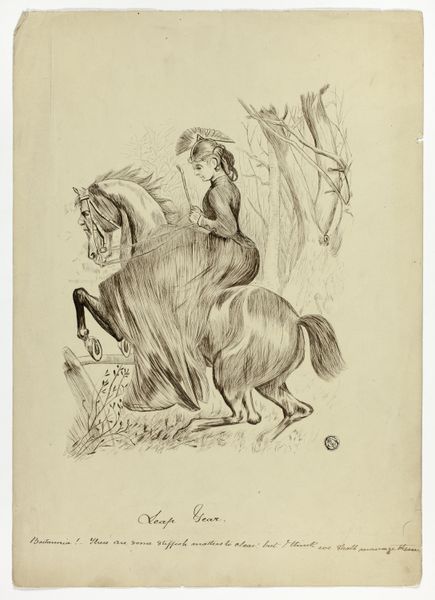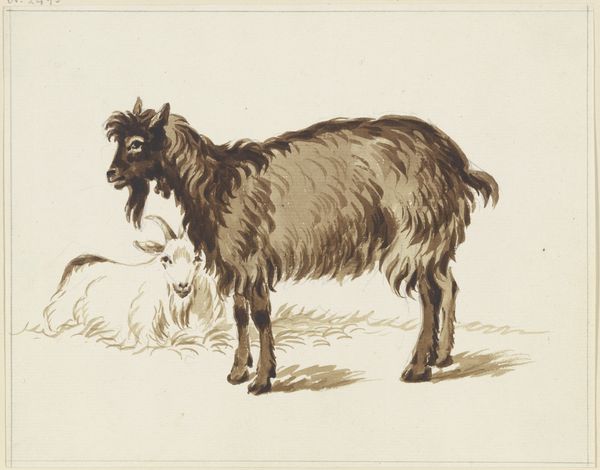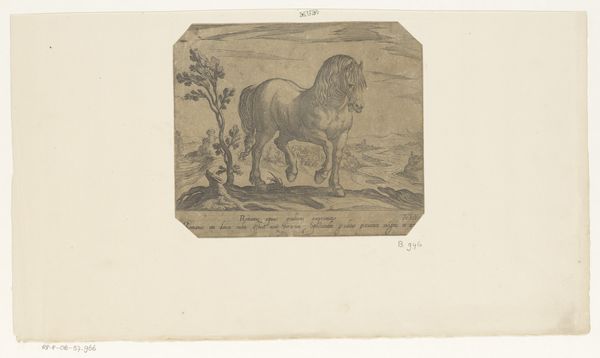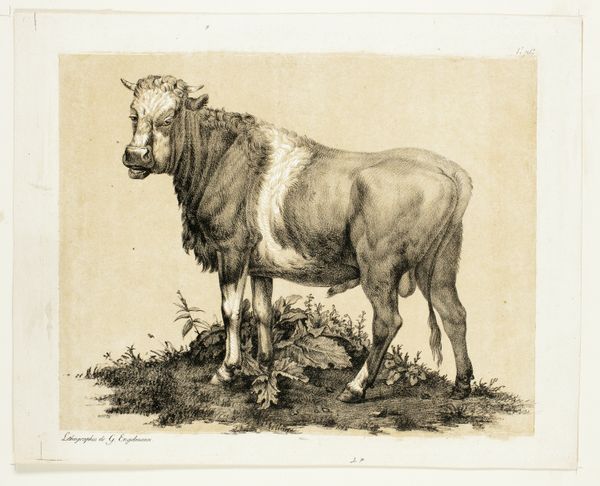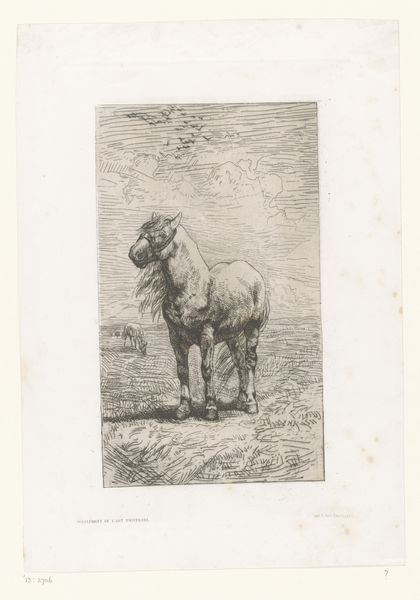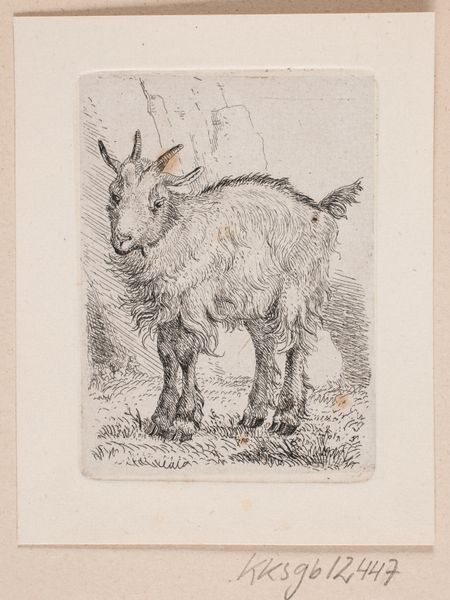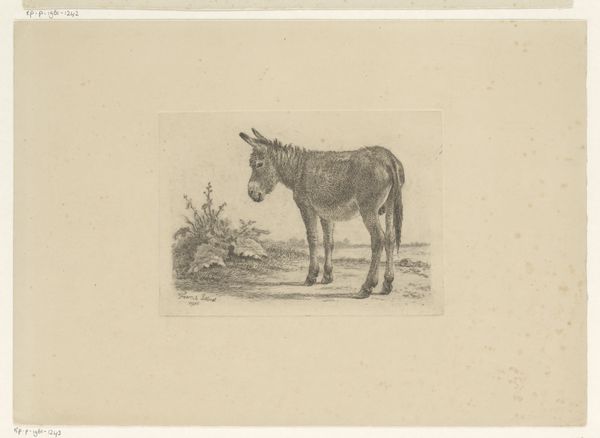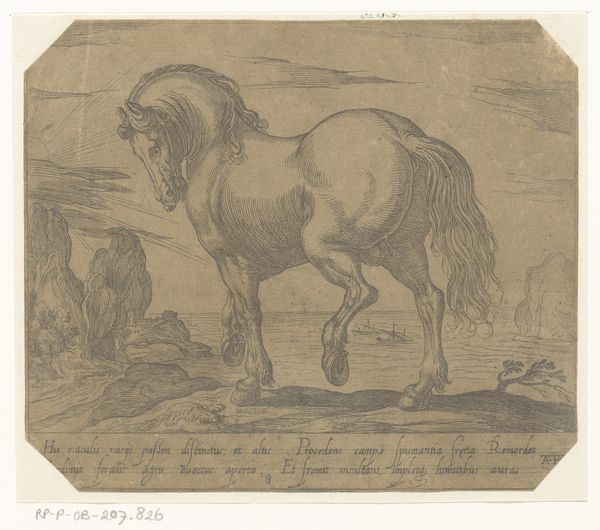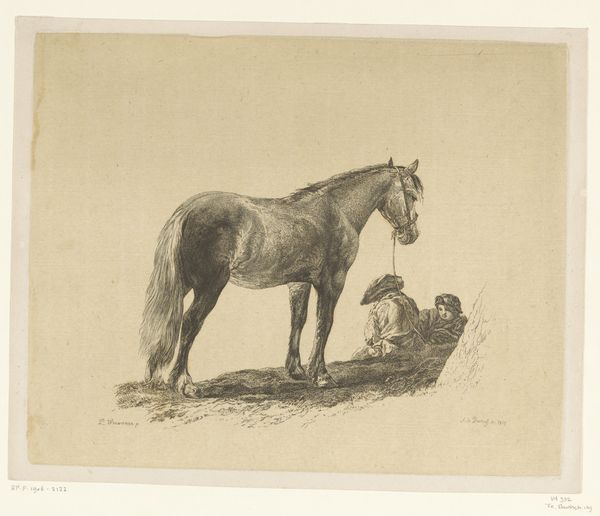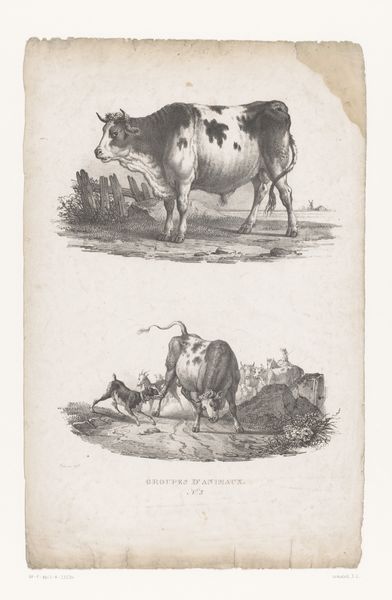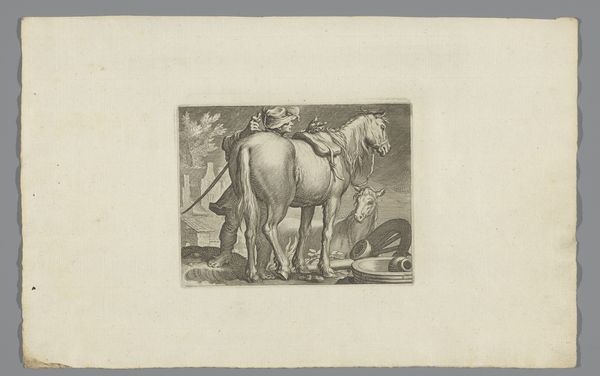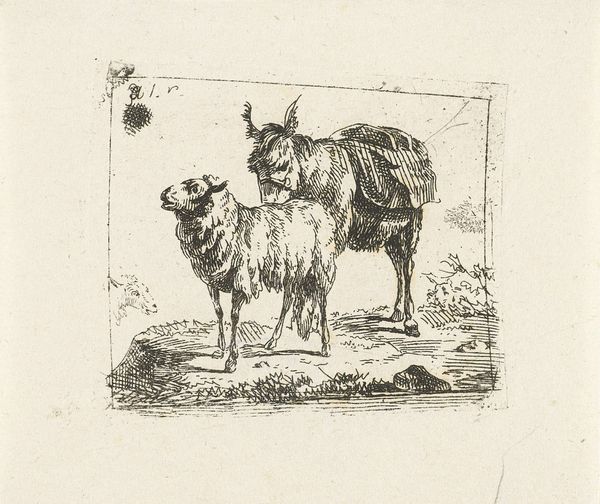
print, woodcut
# print
#
landscape
#
figuration
#
woodcut
Dimensions: 162 mm (height) x 118 mm (width) (billedmaal), 247 mm (height) x 193 mm (width) (bladmaal)
Editor: "Hoppen og fØllet," or "The Mare and Foal," a woodcut print by Andreas Flinch, created in 1841. There's a peculiar stillness about this image, despite it depicting two animals in a field. What stands out to you? Curator: This piece is fascinating when viewed through the lens of 19th-century Danish art. While seemingly pastoral, the inclusion of the animal skull within the decorative border beneath the horses is suggestive. The death's-head, placed directly beneath these figures of life and growth, can serve to bring ideas surrounding nationhood and patriotism. Considering the print was made at the precipice of Danish nationalism this interpretation becomes viable when asking ourselves the question "what price must be payed to sustain the strength of nation?" This type of imagery really asks us to investigate the artist's positioning. Editor: The juxtaposition of life and death within a symbol of country, how was it received at the time? Curator: Critical responses were varied, of course. Some saw it simply as a charming, sentimental portrayal of motherhood. Others, likely attuned to the rising nationalist sentiment, recognized the deeper symbolic layers. Think of the woodcut as a very democratic medium. It was an accessible art form, reaching a broad audience and engaging them, often subtly, in the political discourses of the day. Is it propaganda? Not overtly. But it’s definitely part of a visual language that’s shaping and reflecting a sense of national identity. Editor: That's insightful, the subtle commentary on nationhood adds so much depth to what I initially saw as a simple scene. Thanks! Curator: Exactly. It demonstrates how deeply embedded even seemingly bucolic images are within the cultural and political landscape of their time. And we both got to expand our perspective on Andreas Flinch's political, and cultural role in Denmark's art sphere.
Comments
No comments
Be the first to comment and join the conversation on the ultimate creative platform.

